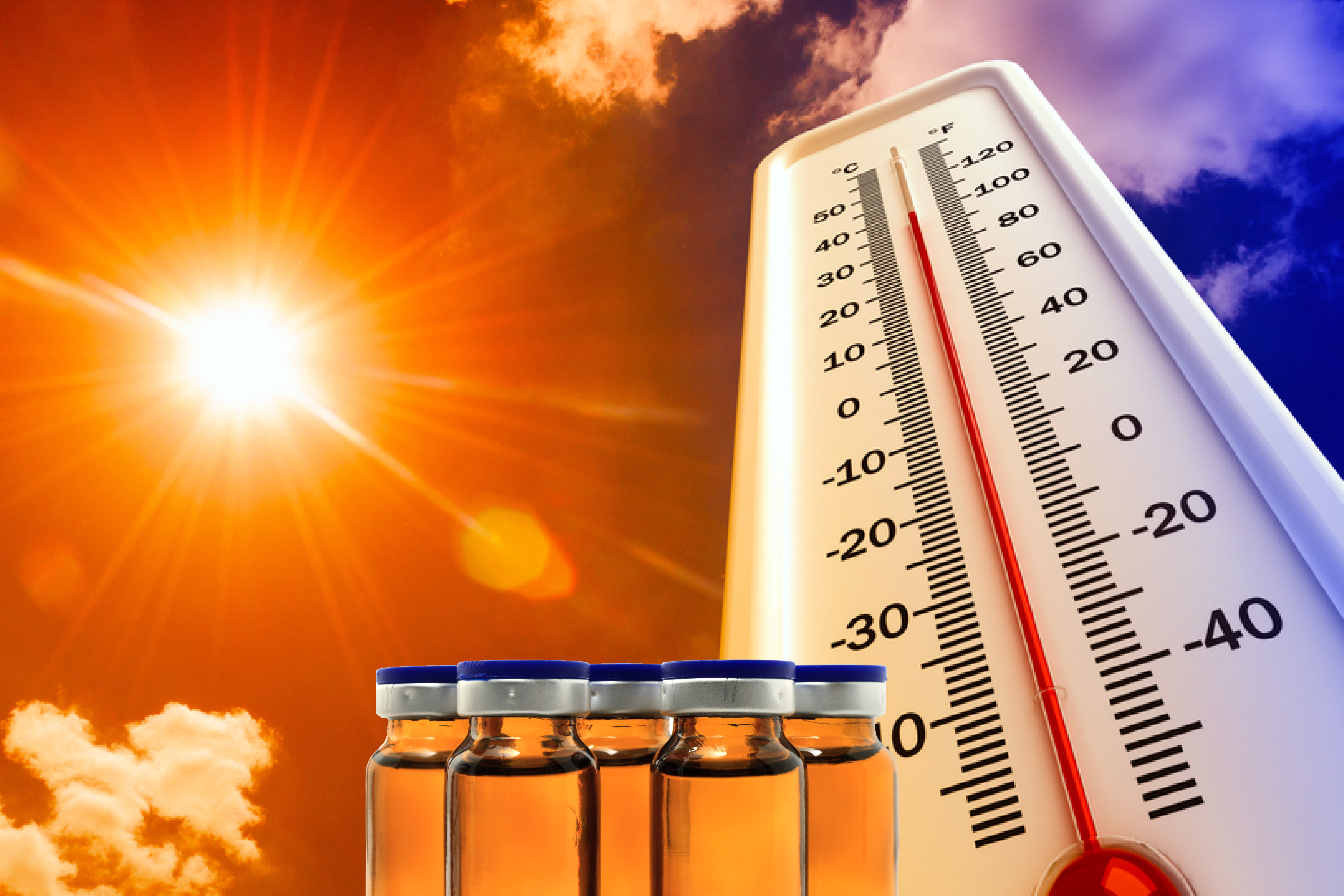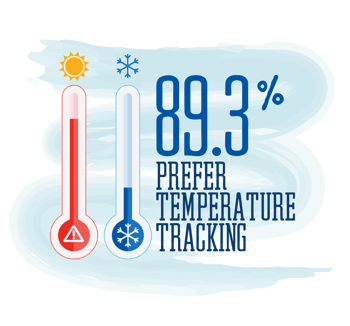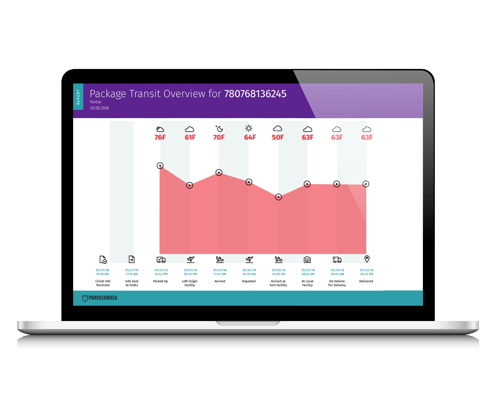
Know your external cold chain temperatures are not out of range to improve specialty pharmacy patient safety and confidence – plus safeguard revenue
Many specialty medications are temperature sensitive. In fact, about $318 billion worth of pharmaceuticals are in the cold chain today. While your specialty pharmacy can follow precise standard operating procedures and accreditation requirements for cold chain management at the warehouse level, how can you track and manage temperature exposure ranges once they move from your hands into the carriers’ hands? And, how can you know — with certainty — that medications are safe to use once they get to your patients?

ParcelShield’s PharmacistView™ feature, which is built-in to ParcelShield FS™, reduces the guesswork for pharmacists making ‘final mile’ delivery decisions.
For example, if PharmacistView “sees” that a specialty medication package has landed in Dallas, Texas at 10 a.m. and left at 4 p.m., it reports the external temperatures in Dallas between 10 a.m and 4 p.m.
The pharmacist can then access the report data through ParcelShield FS. If the external temperature report appears to be outside of the medication’s storage recommendations, the pharmacist can then decide whether the drug is safe enough to deliver to the patient or if it should be returned to the pharmacy and replaced.
PharmacistView data is based on actual weather forecasts at every stop the specialty medication makes during delivery — from the pharmacy to the patient’s doorstep.
Here’s another way to think about specialty medications and delivery temperatures.
When it comes to external temperature exposure, specialty medications can be like potato salad. They’re either safe to consume or they’re not, depending on where they’ve been, for how long — and their estimated external .
Imagine this scenario.
You’re at a picnic. You see a great spread of food. Right in the middle is a tub of potato salad. Delicious! You dive in for a big scoop, but someone stops you.
“That potato salad has been in the back of my car since this morning.” Yikes!
You check your weather app. The external temperature in town reads 90 degrees. That potato salad has sat in a hot car for hours. Is that potato salad safe to eat? Are you going to chance getting sick?
You wouldn’t risk eating spoiled potato salad. Would you risk patients using spoiled specialty medications?
Taking a chance on a specialty medication that’s sat in a too hot or too cold carrier facility or truck is very risky business — for the patient and the specialty pharmacy.
But unlike a spoiled picnic food, an external temperature compromised specialty medication can impact a patient’s therapy and place their life at risk. Beyond the immediate patient risks, spoiled medications result in lost revenue.
Fortunately, ParcelShield’s PharmacistView makes it much easier for pharmacists to reduce these risks and make informed delivery decisions.
Understanding goes far beyond maintaining the cold chain in-house. To lack understanding is to give up a slice of the current $318 billion cold chain pharmaceutical market.
Logistics researchers from Amerisource Bergen’s World Courier suggest that significant gaps in supply chain visibility for cold chain pharmaceuticals are a real problem for all medication stakeholders. These gaps, especially in-transit external temperature fluctuations of medication deliveries, harm drug efficacy (effectiveness), or can completely spoil the drug. This can cost the specialty pharmacy or manufacturer significant revenue dollars.
As if this wasn’t bad enough, external temperature compromised medications can affect patient loyalty (in a survey, 89.3 percent of specialty patients said they prefer specialty pharmacies that track temperatures), as well as insurance reimbursements and accreditation compliance.
While most specialty pharmacies follow temperature-sensitive best practices, such as using special envelopes, liners, gel packs, and coolers, these measures can only protect against external temperature threats for so long.
Like potato salad, if specialty medications are left in heat or cold for too long, even the best protections can fail.
While most specialty pharmacies follows the best temperature-sensitive best practices, such as using special envelopes, liners, gel packs, and coolers, these measures can only protect against temperature threats for so long.
Like potato salad, if your specialty meds are left in heat or cold for too long due to carrier delays, even the best protections can fail.
ParcelShield PharmacistView: More Protection Against External Temperature Threats
Want to ensure your specialty medicines are safe on delivery? ParcelShield’s PharmacistView, built on Predictive Parcel Science is here to help — and it’s built in to the ParcelShield FS parcel management solution.
PharmacistView is an addition to the already comprehensive ParcelShield FS web-based solution.
Once a specialty drug is sent out to a carrier, ParcelShield specialty pharmacy customers can do far more than track and respond to enroute drug locations and conditions. They can access estimated external temperature reports (by location) at all points of the parcel journey. The process is simple:
 ParcelShield FS automatically:
ParcelShield FS automatically:
Pharmacists can them make informed critical decisions on whether or not specialty drugs should deliver to patients or be re-routed back to the pharmacy due to compromised external temperature risks.
The ability for pharmacists to make these final mile decisions can make all the difference in patient safety, loyalty, revenue management, and accreditation compliance.
It’s all included in ParcelShield FS, right now. Because shouldn’t you know if your specialty medications are safe on delivery?
The nation’s top specialty pharmacies count on ParcelShield. Will you join them? Schedule a free demo today.
Subscribe to ParcelShield’s blog to get up-to-the-minute information on these emerging technologies.
122 Eastgate Drive
Danville, IL 61834
855-804-9533